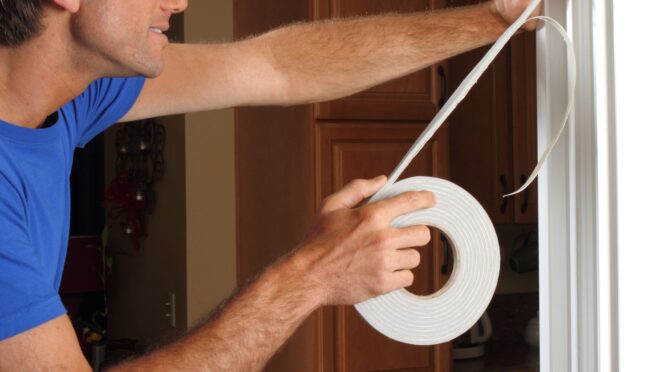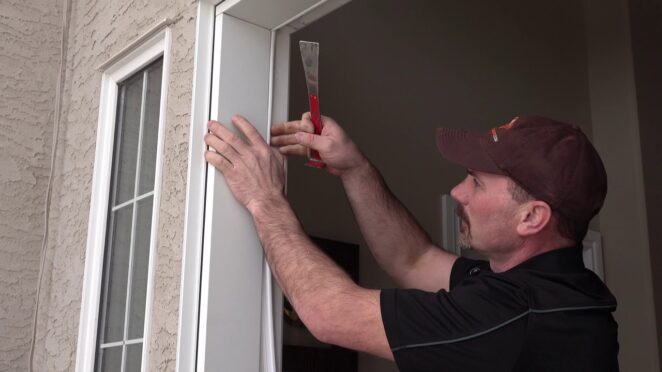PVC doors have become a popular choice among homeowners due to their durability and low maintenance requirements. They are resistant to weathering and do not require regular painting or staining like traditional wooden doors. However, while PVC doors may be low maintenance, they are not inherently energy-efficient. Without proper insulation, they can lead to heat loss and drafts, which can cause energy bills to skyrocket. Therefore, it is important to take steps to insulate PVC doors to maximize their energy efficiency and reduce energy costs.
There are several ways to insulate PVC doors, such as using weather stripping, installing a door sweep, etc. However, to maximize their energy efficiency and reduce energy costs, it’s important to properly insulate them. Here are some tips for insulating PVC doors. By taking steps to insulate PVC doors, homeowners can enjoy a more comfortable and energy-efficient home. With the right insulation, PVC doors can provide excellent insulation properties, keeping homes warm in the winter and cool in the summer.
1. Use Weather Stripping

Weather stripping is a cost-effective and simple solution for insulating PVC doors. It involves using a narrow strip of material, such as foam or rubber, to seal gaps around the door frame. These gaps can occur due to natural wear and tear, or improper installation of the door. Weather stripping helps to prevent drafts, reduce heat loss, and improve energy efficiency.
Applying weather stripping is relatively easy and requires no special skills. The material can be cut to size, and then applied using adhesive or a specialized weather-stripping tool. It is important to ensure that the weather stripping is applied evenly and tightly to the door frame, to avoid any gaps that may compromise its effectiveness.
Overall, weather stripping is a cost-effective and simple way to improve the energy efficiency of PVC doors. It can help to reduce energy bills, create a more comfortable living space, and reduce the environmental impact of your home.
2. Install a Door Sweep
Installing a door sweep is a simple and effective way to improve the insulation properties of PVC doors. A door sweep is a strip of material, such as rubber or bristle, that is attached to the bottom of the door. It seals the gap between the door and the floor, preventing drafts and reducing heat loss. Door sweeps are relatively inexpensive and can be easily installed with adhesive or screws. They are a great addition to weather stripping and can significantly improve the energy efficiency of PVC doors.
3. Seal Around the Door Frame

Sealing around the door frame using caulk or foam insulation is another effective way to insulate PVC doors. Gaps around the door frame can lead to drafts and heat loss, reducing the energy efficiency of the door. By applying caulk or foam insulation to these gaps, homeowners can create a tight seal and prevent air from escaping. This can significantly improve the power efficiency of PVC doors and help to reduce energy bills. Sealing around the door frame is relatively simple and can be done with a few basic tools. It is an affordable and effective solution for improving the insulation properties of PVC doors.
4. Upgrade the Glass
Upgrading the glass in PVC doors to energy-efficient double-glazed or triple-glazed glass is another effective way to improve insulation properties. The double-glazed and triple-glazed glass use two or three layers of glass with a layer of air or gas between them to provide better insulation. This creates a barrier against heat loss and drafts, making the door more energy-efficient.
Upgrading the glass in PVC doors can be a bit more expensive than some of the other insulation solutions, but it can provide significant long-term savings on energy bills. In addition to improving power efficiency, energy-efficient glass can also provide better noise reduction and increased security. It is important to consult with a professional to determine the best type of energy-efficient glass for your specific PVC door.
Overall, upgrading the glass in PVC doors can be a great investment for homeowners looking to improve the insulation properties of their doors and reduce power costs.
5. Consider Insulated Blinds or Curtains

Insulated blinds or curtains can be a great addition to further reduce heat loss and prevent drafts in PVC doors. They work by creating an extra layer of insulation between the glass and the room. Insulated blinds or curtains can be made with a variety of materials, including thermal fabrics or cellular shades. They can be customized to fit the size and style of your PVC doors, and are available in a range of colors and patterns to match your home decor. Overall, insulated blinds or curtains are an affordable and easy way to improve the insulation properties of PVC entrances, and can help to reduce energy bills while creating a more comfortable living space.
Making Your PVC Doors Energy-Efficient
Making your PVC doors energy-efficient is a simple and effective way to reduce your power costs and create a more comfortable living space. By taking steps to insulate your PVC doors, you can prevent heat loss, reduce drafts, and improve the overall insulation properties of your home.
One of the best ways to insulate your PVC doors is to use weather stripping. Weatherstripping is a cost-effective solution that can be easily applied to seal gaps around the door frame. Another effective solution is to install a door sweep, which can help to seal the gap between the door and the floor. Sealing around the door frame using caulk or foam insulation can also make a significant difference in power efficiency.
In addition, upgrading the glass in your PVC doors to energy-efficient double-glazed or triple-glazed glass can improve insulation properties and reduce heat loss. Insulated blinds or curtains can also be a great addition to further reduce heat loss and prevent drafts.
By insulating your PVC doors, you can reduce your power bills, create a more comfortable living space, and reduce your carbon footprint. With a few simple changes, you can transform your PVC doors from energy-wasters to energy-efficient assets. So, take action today and start making your PVC doors more energy-efficient!




